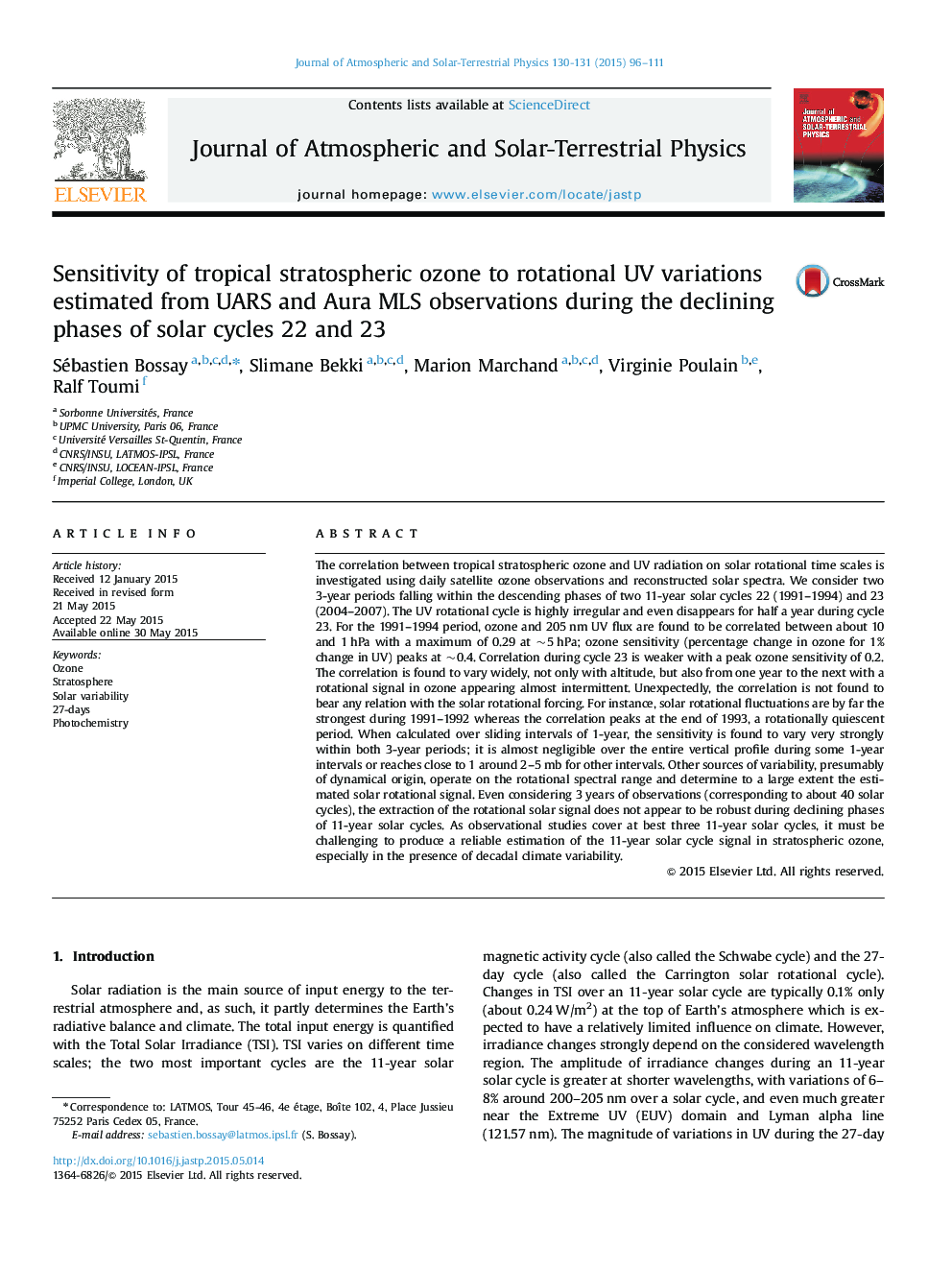| کد مقاله | کد نشریه | سال انتشار | مقاله انگلیسی | نسخه تمام متن |
|---|---|---|---|---|
| 8140026 | 1523613 | 2015 | 16 صفحه PDF | دانلود رایگان |
عنوان انگلیسی مقاله ISI
Sensitivity of tropical stratospheric ozone to rotational UV variations estimated from UARS and Aura MLS observations during the declining phases of solar cycles 22 and 23
دانلود مقاله + سفارش ترجمه
دانلود مقاله ISI انگلیسی
رایگان برای ایرانیان
کلمات کلیدی
موضوعات مرتبط
مهندسی و علوم پایه
علوم زمین و سیارات
فیزیک زمین (ژئو فیزیک)
پیش نمایش صفحه اول مقاله

چکیده انگلیسی
The correlation between tropical stratospheric ozone and UV radiation on solar rotational time scales is investigated using daily satellite ozone observations and reconstructed solar spectra. We consider two 3-year periods falling within the descending phases of two 11-year solar cycles 22 (1991-1994) and 23 (2004-2007). The UV rotational cycle is highly irregular and even disappears for half a year during cycle 23. For the 1991-1994 period, ozone and 205Â nm UV flux are found to be correlated between about 10 and 1Â hPa with a maximum of 0.29 at ~5Â hPa; ozone sensitivity (percentage change in ozone for 1% change in UV) peaks at ~0.4. Correlation during cycle 23 is weaker with a peak ozone sensitivity of 0.2. The correlation is found to vary widely, not only with altitude, but also from one year to the next with a rotational signal in ozone appearing almost intermittent. Unexpectedly, the correlation is not found to bear any relation with the solar rotational forcing. For instance, solar rotational fluctuations are by far the strongest during 1991-1992 whereas the correlation peaks at the end of 1993, a rotationally quiescent period. When calculated over sliding intervals of 1-year, the sensitivity is found to vary very strongly within both 3-year periods; it is almost negligible over the entire vertical profile during some 1-year intervals or reaches close to 1 around 2-5Â mb for other intervals. Other sources of variability, presumably of dynamical origin, operate on the rotational spectral range and determine to a large extent the estimated solar rotational signal. Even considering 3 years of observations (corresponding to about 40 solar cycles), the extraction of the rotational solar signal does not appear to be robust during declining phases of 11-year solar cycles. As observational studies cover at best three 11-year solar cycles, it must be challenging to produce a reliable estimation of the 11-year solar cycle signal in stratospheric ozone, especially in the presence of decadal climate variability.
ناشر
Database: Elsevier - ScienceDirect (ساینس دایرکت)
Journal: Journal of Atmospheric and Solar-Terrestrial Physics - Volumes 130â131, August 2015, Pages 96-111
Journal: Journal of Atmospheric and Solar-Terrestrial Physics - Volumes 130â131, August 2015, Pages 96-111
نویسندگان
Sébastien Bossay, Slimane Bekki, Marion Marchand, Virginie Poulain, Ralf Toumi,